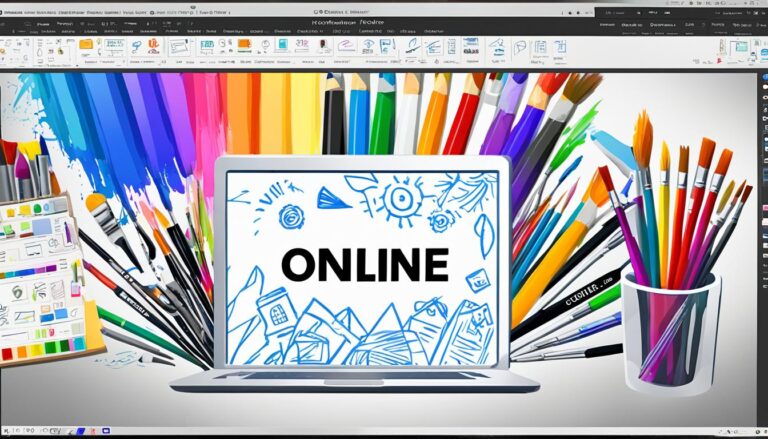Boost Your Staff Productivity Today!

Are you struggling to optimize your workforce and improve employee efficiency? As the way we work continues to evolve, ensuring staff productivity has become more challenging than ever. But fear not, because there are strategies you can implement right now to enhance productivity in your organization.
In this article, we will delve into the key factors that affect productivity and explore effective strategies that can boost staff performance. From onboarding to avoiding micromanagement, hiring for cultural fit to promoting team collaboration, we will provide actionable insights to help you maximize productivity in your workplace.
Key Takeaways:
- Implement a systematic process to enhance staff productivity in your organization.
- Elevate employee onboarding programs to improve employee retention and loyalty.
- Empower your employees by avoiding micromanagement and promoting autonomy.
- Consider cultural fit when making hiring decisions to ensure better job satisfaction and productivity.
- Seek feedback, promote team collaboration, and utilize digital workplace tools for enhanced communication and innovation.
Enhance Employee Onboarding
Effective employee onboarding is crucial for integrating new team members into your company culture and improving retention rates. A well-designed onboarding program provides new employees with the necessary training, feedback, and support to succeed in their roles. Additionally, creating a strong communication network is vital to foster connections and enable new hires to learn from their colleagues.
An efficient onboarding process not only helps employees feel valued and engaged from the beginning but also boosts their loyalty and productivity. By investing in employee onboarding, you set the stage for long-term success and create a positive work environment that nurtures growth and development.
Comprehensive Training
During the onboarding process, it is essential to provide new employees with comprehensive training to ensure they have the knowledge and skills required to excel in their roles. Training sessions should cover both job-specific tasks and familiarize employees with company policies, procedures, and core values. This training will not only equip employees with the necessary tools to perform their jobs effectively but also foster confidence and productivity.
Feedback and Support
Feedback plays a critical role in employee development, and it is important to incorporate this element into the onboarding process. Regularly seeking feedback from new hires not only helps identify areas for improvement but also makes them feel valued and supported. Providing ongoing support and guidance during the onboarding period promotes a positive and inclusive work environment, ultimately enhancing employee retention and productivity.
Create a Strong Communication Network
Establishing a strong communication network is crucial for facilitating effective onboarding and collaboration within your organization. By implementing tools and platforms that enable seamless communication and information sharing, you can create a connected workforce. This network allows new employees to easily connect with their colleagues, learn from experienced team members, and build relationships that contribute to their overall success and productivity.
Enhancing your employee onboarding process sets the foundation for a motivated and engaged workforce. It is an investment in the future success of your organization, helping you attract and retain top talent, while simultaneously boosting productivity and fostering a positive company culture.
| Benefits of Effective Onboarding | Statistics |
|---|---|
| Improved employee retention | 87% |
| Increased productivity | 54% |
| Enhanced job satisfaction | 69% |
| Accelerated time to proficiency | 50% |
| Boosted company culture | 63% |

Say No To Micromanaging
In today’s fast-paced workplace, micromanaging can hinder employee productivity and stifle creativity. Instead, organizations should focus on empowering their employees to become more independent and take ownership of their work. By delegating tasks and granting employees the flexibility to make decisions, you can create a more empowered workforce that thrives on autonomy.
When employees feel trusted and empowered, they are more likely to take initiative, display greater job satisfaction, and produce high-quality results. Encouraging independence fosters a sense of ownership and accountability, motivating employees to excel in their roles.
Flexibility is also key in empowering employees. Recognize that each individual has their own working style and preferences. By allowing for flexibility in work schedules, remote work options, or alternative approaches to completing tasks, you enable employees to perform at their best.
The Benefits of Employee Empowerment:
- Enhanced job satisfaction: Employees who have the freedom to manage their own tasks and make decisions experience higher levels of job satisfaction.
- Increased productivity: Empowered employees are motivated to perform their best, leading to improved productivity and efficiency.
- Creative problem-solving: Autonomy fosters creativity and encourages employees to find innovative solutions to challenges.
- Higher employee retention: Empowered employees are more likely to stay loyal to the organization, reducing turnover rates.
By embracing employee empowerment and rejecting micromanagement, you create a thriving work environment that promotes growth, creativity, and collaboration. Remember, trust and flexibility are the cornerstones of a successful and productive workforce.

| Benefits of Employee Empowerment | Why it Matters |
|---|---|
| Enhanced job satisfaction | Employees who have control over their work experience higher job satisfaction levels, resulting in greater engagement and commitment to the organization. |
| Increased productivity | Empowered employees are motivated to take ownership of their tasks and contribute their best effort, leading to enhanced productivity levels and improved overall performance. |
| Creative problem-solving | When employees are empowered to make decisions and think critically, they are more likely to come up with innovative solutions to challenges and drive organizational success. |
| Higher employee retention | By providing employees with independence and autonomy, organizations create a fulfilling work environment that encourages retention and reduces turnover, saving valuable time and resources in the long run. |
Hire People, Not Resumes
When it comes to hiring new employees, their skills and experience are important factors to consider. However, there is another key element that should not be overlooked: cultural fit. Hiring employees who align with the company’s culture can have a significant impact on their satisfaction and productivity.
Employee expectations play a crucial role in determining their happiness and motivation in the workplace. When individuals feel a strong connection to the company’s values, mission, and working environment, they are more likely to thrive and contribute to the overall success of the organization.
During the hiring process, it is essential to clearly communicate the company’s culture to potential candidates. This helps them understand the expectations, values, and behaviors that are integral to the organization. By doing so, you increase the chances of finding individuals who will seamlessly integrate into the team and positively impact the company’s productivity.
Hiring for cultural fit not only reduces the risk of turnover but also minimizes the chances of bringing in employees who may be unproductive or clash with the existing team dynamics. It allows you to build a cohesive and harmonious work environment where everyone works towards a common goal.
By prioritizing cultural fit when making hiring decisions, you are actively enhancing productivity within your organization. When employees feel a sense of belonging and alignment with the company culture, they are more likely to be engaged, motivated, and driven to contribute their best efforts.
The Benefits of Hiring for Cultural Fit:
- Improved employee satisfaction and engagement
- Enhanced teamwork and collaboration
- Reduced turnover and increased retention rates
- Higher productivity and performance levels
Creating a workplace culture where employees thrive requires a careful selection process that goes beyond evaluating resumes. Take the time to assess candidates’ values, attitudes, and work style during interviews.
Remember, it’s not just about hiring the most qualified individuals; it’s about finding the right individuals who will fit seamlessly into your company’s culture, driving productivity and strengthening your organization as a whole.

| Company Culture | Employee Expectations | Productivity Enhancement |
|---|---|---|
| Values | Alignment | Engagement |
| Work Environment | Belonging | Motivation |
| Team Dynamics | Collaboration | Performance |
Take Feedback and Promote Team Collaboration
Regularly seeking and incorporating employee feedback is crucial for improving productivity. When you create an environment where employees feel comfortable sharing their thoughts and ideas, you foster increased engagement and productivity. By actively listening to your employees, you can identify areas for improvement, address concerns, and implement changes that positively impact their work experience.
In addition to feedback, promoting workplace collaboration is essential for driving innovation and productivity. By encouraging your teams to work together, you can tap into the collective intelligence and creativity of your employees. Implementing digital workplace tools can enhance communication and collaboration, making it easier for employees to share ideas, collaborate on projects, and contribute to the overall success of your organization.
Recognizing and celebrating team accomplishments is another effective way to boost employee morale and motivation. When you acknowledge the achievements of your teams, whether big or small, you show appreciation for their hard work and dedication. This recognition not only makes employees feel valued, but it also encourages them to continue striving for excellence.
Investing in employee training is a vital component of maximizing productivity. By providing your employees with the necessary skills and knowledge through training programs, you empower them to perform their jobs effectively. Continuous learning and development not only enhance productivity but also improve job satisfaction and employee retention.





